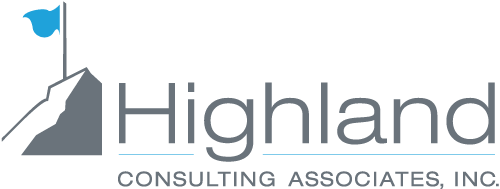Inevitabilities: Death, Taxes…and Audits?

Benjamin Franklin is often quoted for having said there are two certainties in life: death and taxes. But, as mid and large plan sponsors of defined contribution (DC) plans can attest, their annual benefit plan audit is another certainty. And let’s not overlook the possibility of a regulatory audit. Regarding the latter, there’s been significant and wider enforcement in recent years with certain regional offices pushing targeted reviews.
As DC plans can be complex to administer, there are a number of common deficiencies that are often found in DC plan audits. These deficiencies can have a significant impact on the plan's financial statements and potentially lead to additional expenses. If you are a member of a retirement plan committee, you’ll want to be aware of what your committee can and should incorporate into your overall governance process—including audit hot buttons and targeted issues.
In this article, we address some of the most common deficiencies uncovered and focus on one topic that has been a recent focus of one regional Department of Labor (DOL) office. Below are common issues that many plan sponsors are accustomed to discussing with their benefit plan audit firm:
- Timely remittance of contributions. The employer is required to remit contributions to the plan on a timely basis. Failure to do so can result in a deficiency. The days-gone-by “rule” of deposits being due by the 15th business day of the following month will not pass muster in audit situations.
- Eligible compensation. The plan's contributions are based on the employee's eligible compensation. It is important to ensure that the eligible compensation is calculated as outlined in the plan document. Due to payroll and benefits staff turnover the clear understanding of what constitutes compensation can deviate from what is defined as compensation in the plan document.
- Auto-enrollment and auto-escalation. Many DC plans offer auto-enrollment and auto-escalation features. These features allow the employer to automatically enroll employees in the plan and automatically increase their contributions each year. Proper care needs to be taken to ensure that these features are working properly and that participants are being enrolled and increased (or not) based on the provisions in the plan document and plan amendments.
- Distributions. When participants leave an organization, they may be entitled to a distribution from the plan. Distributions need to be processed correctly, and participants made aware of their rights. This applies to force-outs of small, terminated plan balances as well. Force-outs should be performed at least annually, though they may occur on a more frequent basis.
- Vesting and forfeitures. Vesting determines when participants become entitled to their benefits. Forfeitures occur when participants leave the organization and have not yet vested in their benefits. It is important to ensure that vesting and forfeitures are being handled correctly, as this can have a significant impact on the plan's assets, including the forfeiture balance. Accounting of the forfeiture balance and applying it in a timely fashion consistent with the plan document is another aspect that committees should document.
Recent Topic of Significant Focus: Lost Participants
One regional DOL office has noted an area of enforcement which Highland believes all committees should review and document:
- Lost participants. It is important to keep track of all participants in the plan, even if they are no longer employed by the organization. Lost participants can still be entitled to benefits, and their accounts should be properly maintained. This may seem obvious, but participants (especially termed participants with a balances) move, change their phone number or get new email addresses. It’s the plan sponsor’s responsibility to update this data as soon as possible.
The DOL issued Missing Participant – Best Practices for Pension Plansi in January 2021, which provides a solid framework for how committees should address this matter. There are a number of strategies that can be used to recover lost participants, including:
- Maintaining accurate data on plan participants: Having accurate and up-to-date data on plan participants certainly helps mitigate the risk of having lost participants in the plan. Updating census data, reminding participants to update beneficiary information and even social media contact information are all listed in the DOL tips.
- Sending out reminder letters: The plan sponsor can send out reminder letters to participants who have not made a contribution in a certain period of time. These letters should include information about how to update their contact information and how to resume participation in the plan.
- Contacting former employers: The plan sponsor can contact former employers to see if they have any information about lost participants. This information can then be used to send out reminder letters or to update the plan’s records.
- Using third-party services: There are a number of third-party services that can help plan sponsors recover lost participants. These services use a variety of methods to track down lost participants, including social media, public records, and direct mail.
By taking steps to recover lost participants, plan sponsors can help to ensure that all participants are aware of their benefits and that they are able to participate in the plan.
Defined contribution plans are a valuable tool for retirement savings. However, it is important to ensure that these plans are properly administered and audited. By addressing the common deficiencies that are found in DC plan audits, plan sponsors can help to protect plan assets and ensure that participants receive the benefits, as per plan documents.
If you need assistance in this area or with your governance process, Highland can help. Call Rich Swanner at 440.808.1500.
Highland Consulting Associates, Inc. was founded in 1993 with the conviction that companies and individuals could be better served with integrity, impartiality, and stewardship. Today, Highland is 100% owned by a team of owner-associates galvanized around this promise: As your Investor Advocates®, we are Client First. Every Opportunity. Every Interaction.
Highland Consulting Associates, Inc. is a registered investment adviser. Information presented is for educational purposes only and does not intend to make an offer of solicitation for the sale or purchase of specific securities, investments, or investment strategies. Investments involve risk and unless otherwise stated, are not guaranteed. Be sure to first consult with a qualified financial adviser and/or tax professional before implementing any strategy discussed herein. Past performance is not indicative of future performance.



